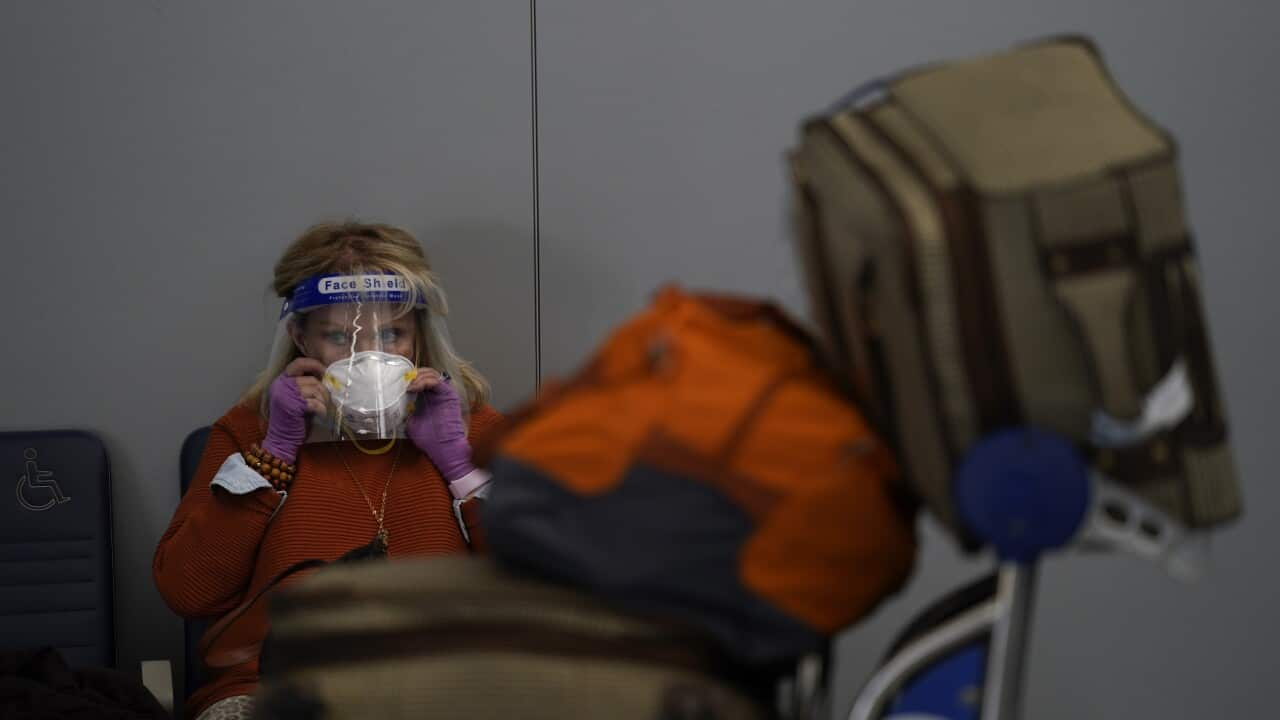Key Points
- XBB.1.5 most transmissible subvariant detected: WHO
- More immune-evasive than previous variants but current vaccines provide strong protection
- For latest travel advice, check SmartTraveller
As we enter the fourth year of the COVID pandemic, much of the world has begun transitioning towards treating the disease like other respiratory viral illnesses.
However, the recent surge of cases in China and the emergence and spread of the new Omicron subvariant XBB.1.5 in the northern hemisphere, show that the pandemic is far from over.
What's the threat to Australia?
According to the World Health Organisation (WHO), the new subvariant of Omicron, XBB.1.5, has been detected in 29 countries so far.
It is a recombinant of two BA.2 sublineages and is highly transmissible due to the mutation it embodies.
WHO says XBB.1.5 is the “most transmissible subvariant that has been detected yet” and has rapidly replaced other circulating variants.
In the northeastern part of the US, XBB.1.5 is responsible for approximately 70 per cent of the new COVID cases, while recent data from the UK showed that one in 25 cases is now caused by it.
So far, eight cases of XBB.1.5 have been detected in Australia.
"XBB.1.5. will hit Australia no matter what we do," says Professor Adrian Esterman, an epidemiologist at the University of South Australia.
"Potentially, XBB.1.5 will cause another wave of cases in Australia," he told SBS.
However, with so many people who have already had COVID and reasonable vaccine coverage, Prof Esterman believes that it is "unlikely to be any worse than that caused by current subvariants."
"Early data suggest that XBB.1.5 is more immune-evasive than previous versions of the virus and that current vaccines continue to provide strong protection.
"There is currently no data to suggest that XBB.1.5 is more likely to cause severe disease (including death).
"The Australian government continues to monitor the local and global COVID-19 situation very closely. At this stage, there are no plans to introduce additional border measures," the Department of Health and Aged Care told SBS.
How about BF.7 spreading in China?
Australia has begun pre-departure COVID testing for travellers from China, Hong Kong and Macau.
Travellers from these places must show a negative Rapid Antigen Test (RAT) or Nucleic Acid Amplification Technology (NAA) test, undertaken within 48 hours of their scheduled departure time.
Implementing these temporary measures has been made from an "abundance of caution", Health Minister Mark Butler told ABC Radio National Breakfast on 2 January.
Hassan Vally, associate professor of epidemiology at Deakin University, says that given the level of immunity in Australia and the amount and type of variants circulating in the community, the threat of BF.7 is minimal.
"I don’t believe that individuals arriving from China pose a significant threat to the Australian population," he told SBS.
"Any restriction imposed on travellers from specific countries needs to be evidence-based," he added.
Dr Vally and Prof Esterman say the decision to impose pre-departure testing was "political" and did not align with the risk.
What's the current travel advice?
Although there is no restriction on travel between China and Australia, the government is currently advising travellers to China to “exercise a high degree of caution”.
It is currently advised to "exercise normal safety precaution" when travelling to the US. However, pre-departure testing is required when entering the country from China, Hong Kong or Macau.
"The government recommends that travellers make sure they are up to date with their vaccinations, check the and consider relevant travel recommendations."
"All Australians should continue to take precautions in high-risk settings, including physical distancing, practising good hand hygiene and respiratory etiquette, and wearing a properly fitting mask where possible," the Department of Health and Aged Care told SBS.
What'll the pandemic look like in 2023?
While transitioning from the emergency response phase to learning to live with the virus, we're still likely to see a recurring wave of infections in 2023.
"The hope is that these will continue to dampen in terms of their size and health impact," said Dr Vally.
We need to be clear that learning to live with COVID is not the same thing as ignoring COVID.Hassan Vally, Deakin University
"This disease will continue to pose a significant public health threat to us for some time."
"Therefore, we must continue to apply what we have learnt in the past three years to reduce the chances of being infected while having hope for the continued advancements in vaccines and treatments over the next year."
"This will take us further along the path to living with the SARS-CoV-2 virus," Dr Vally added.
SBS is committed to providing all COVID-19 updates to Australia’s multicultural and multilingual communities. Stay safe and stay informed by visiting regularly the

